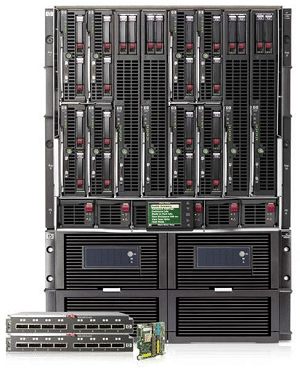Direct Attached Storage (DAS), the name is pretty self-explanatory. A disk subsystem that is directly connected to a host rather than going through a switched network, thereby giving the host exclusive access to the disks. The category obviously includes disks internal to a physical server, but in the storage realm we most often think about JBOD (“just a bunch of disks”) shelves attached to a server via SAS cable.
Traditionally, JBODs were added to servers to either expand capacity or to deliver higher IOPS through additional spindle count. Modern operating system and application vendors have recently been getting smarter about storage – tuning application performance and building storage logic into the application layer that was previously the realm of the disk array manufacturers. This move has shifted how DAS is positioned and what use cases it is applicable in.
 For example, with Microsoft Exchange 2010, the folks in Redmond released the ability to have multiple Exchange Servers, each with DAS replicating to each other through what they call Database Availability Groups (DAGs). Most companies had Exchange traditionally connected to SAN and lots of disks to provide both resiliency and IO. With Exchange 2010, Microsoft improved the IO profile, and, with DAGs are actively positioning DAS as a connectivity option to get large, low-cost mailboxes without sacrificing performance or resiliency.
For example, with Microsoft Exchange 2010, the folks in Redmond released the ability to have multiple Exchange Servers, each with DAS replicating to each other through what they call Database Availability Groups (DAGs). Most companies had Exchange traditionally connected to SAN and lots of disks to provide both resiliency and IO. With Exchange 2010, Microsoft improved the IO profile, and, with DAGs are actively positioning DAS as a connectivity option to get large, low-cost mailboxes without sacrificing performance or resiliency.
Today’s DAS is also more nuanced than the JBODs of old. ‘Shared DAS’ or ‘Direct Area Networks (DAN)’ are variations on a theme whereby multiple hosts can be connected to a set of array controllers, bypassing the need for a switched infrastructure. On the small side, we have modular arrays that can support 4 servers directly attached in a resilient formation. A nice little array deployment plan for a midmarket cluster at a lot less cost than building up a SAN infrastructure. On the high-end, we have tier 1 disk arrays with massive amounts of host connectivity and emerging converged networking infrastructure that can also bypass multi-layer switches. An example of the latter is the Virtual Connect FlexFabric model within the HP BladeSystem. Using ‘Flat SAN technology,’ you can direct attach over 700 servers to a 3PAR disk array without the need for any SAN switches or host HBAs.
Another evolution of DAS is the emergence of independent public cloud providers looking at deploying massive farms of ‘storage servers’ and low-cost JBODs as an alternative to large dedicated disk arrays. Not to be confused with those deploying traditional applications in IT-as-a-Service (ITaaS) paradigms, these independent public cloud providers are bringing completely new applications to market (think Dropbox and the like) and, in order to reach competitive price points, they often pursue homegrown or open-source storage software as a route to pool low-cost, high-capacity disks together in unique ways.
The DAS space will be interesting to watch as application vendors continue to build more logic into applications and as traditional array vendors fight for share. This trend benefits the systems vendors that have a strong affiliation with compute infrastructure and DAS, but hurts traditional ‘storage only’ vendors who have made their bread and butter on shared storage infrastructure.
Related Content
- What are Storage Area Network (SAN) Arrays?
- What is Network Attached Storage (NAS)?
- What is Unified Storage?
- What is Object Storage?
About the Author

Twitter – @HPBradParks
Brad Parks is a strategist in HP Enterprise Servers, Storage and Networking, focusing on product and solution development for HP Converged Infrastructure as it relates to HP Storage. Parks works with customers, product teams and the technical community to develop content and programs to communicate HP’s strategic direction and unique customer value related to data storage.




 Amazon
Amazon